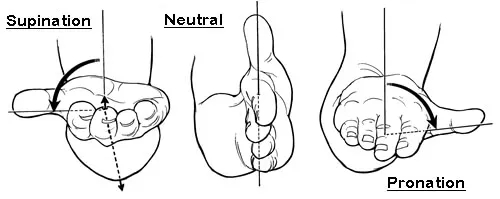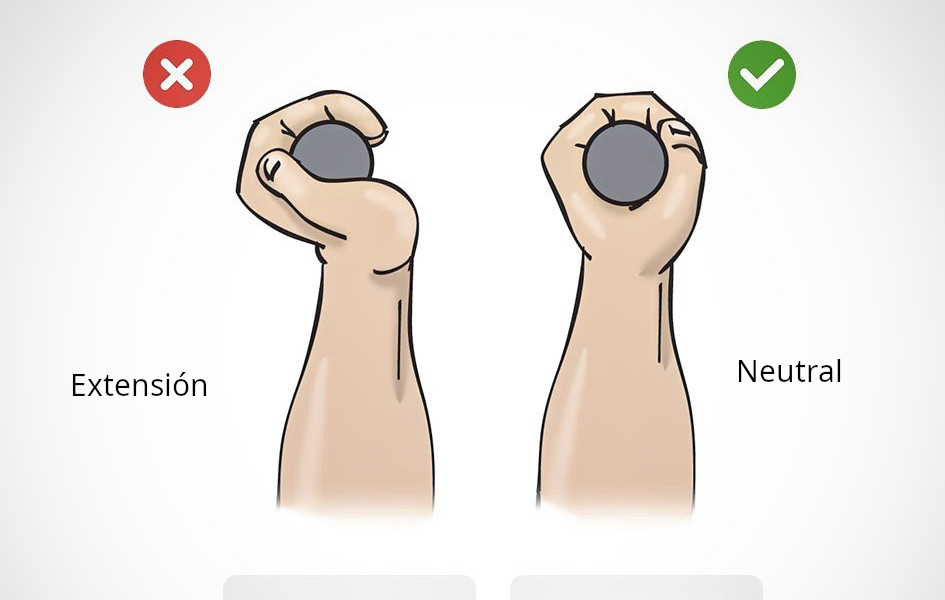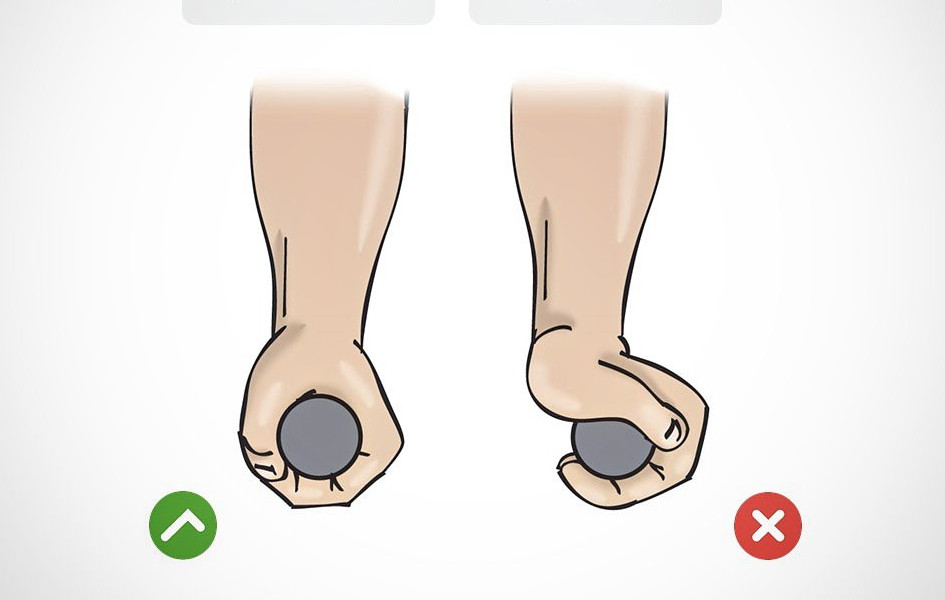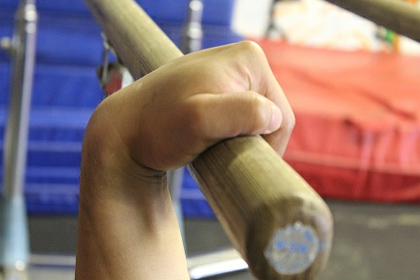
Routine Structure (personal approach)
Routine Ideas
Before…
This is a personal opinion, it does not represent an official guide, and any contributions and improvements are accepted.
Establishing a universal routine is not viable, as there are many variables to consider in order to create a routine, such as physique, individual capabilities, lifestyle, health background, and many more. So, my goal is to share what I have learned and experienced over the years.
Table of Contents
↗️ 🤝 Share…
1. Goals
Everyone has goals, so I’ll try to be as general as the application, time, and sleep allow me.
Briefly, I mention the fundamental capabilities when focusing on training (there are several more that could be considered somewhat secondary): Strength, Power, Endurance, Speed, and Flexibility. You can focus more on one or two than on others or be somewhat general, but the idea is to revolve around these 5 and grow in that focus.
2. Structure
I start with the structure that the routine will have, based on the aforementioned objectives. I may touch on concepts that seem advanced or tangled, but the idea is to have the file here, glance at it whenever possible, and work with a foundation to create something useful.
2.1. Form
It is crucial to work with a permanent mindset that the form of each exercise must be correct; this is something that cannot be sacrificed for any reason. By this, I mean that you cannot sacrifice form to do many repetitions*, be ashamed if it’s like that (XD)
2.2. Exercises
Like every point I’m going to mention, everything will depend on the focus capacity one has. And the issue is not the capacities right now, so I’ll focus on different types of exercises.
This point deals with the exercises that make up the day’s routine, and the level of practice of the individual is also a determining factor. And as this is an almost infinite universe, there are as many exercises and variations as there are Fast and Furious movies (or maybe not that many).
I’ll try to categorize some that I consider fundamental, without disregarding those that do not appear here, as long as they are not injurious.
| Basic | Intermediate | Advanced | |
|---|---|---|---|
| Pull |
|
|
|
| Push |
|
|
|
| Legs |
|
|
|
| Abs |
|
|
|
| Extra |
|
2.3. Frequency
This part is always a broad topic, it can be simplified a lot, but I can get professional here because I like it, it can be taken advantage of. There are several aspects to consider when talking about frequency in training, I’m going to touch on the basics.
2.3.1. Muscle Group
There are many studies on how often a muscle group should be trained in a “week,” ultimately two approaches can be taken: not exceeding rest above 72 hours; waiting for there to be no pain or minimal pain. I consider that depending on the muscle group, if you are just starting to train, lifestyle, diet, it’s always good to be 80-90% recovered or to give it at least 24h of rest if there is no pain. Of course, provided that a good routine has been done, not just 1 or 2 sets and that’s it.
2.3.2. Cycles or Microcycles
Usually, they’re the week, the 5 days, the basic Monday for chest, Tuesday for legs…
A cycle or microcycle is a block of days where the goal is to work the whole body and ends when the entire routine is repeated (the next Monday will be the same as the previous one and so on)
But, depending on the type of routine, it can be more than a week, it can be counted by days, and more varieties of exercises can be taken advantage of.
This is the conventional structure of a “training week,” sometimes 6 days, but basically the same thing is done every day of the week in relation to the previous one:
| Sun | Mon | Tue | Wed | Thu | Fri | Sat |
|---|---|---|---|---|---|---|
| x | x | x | x | x | ||
| x | x | x | x | x |
This is another structure, we wouldn’t talk about the “training week” anymore; it would be a cycle, and it would have 2 weeks:
| Sun | Mon | Tue | Wed | Thu | Fri | Sat |
|---|---|---|---|---|---|---|
| x | x | x | x | |||
| x | x | x | x | x |
It has 3 days of intermediate rest and at the end, 2 days of rest with a day of light or special intermediate training.
And thus, training cycles of up to 4 weeks can be coordinated, depending on the work being sought.
2.4. Rest
We have rests between sets, rests between exercises, rests between routines (the latter as important as training).
Rests between sets vary like everything else, if endurance to strength is sought, rests between 30s and 90s depending on the intensity of the exercise. If strength and power are sought, rests between 90s and 3min are useful. If pure strength, from 3min to 5min.
Rests between exercises, these are the rests when changing from one exercise to another within the routine, I always calculate that they are double or triple the rest between sets.
Rests between routines, in extreme cases of 2 daily routines, no less than 4 hours of rest and different muscle groups must be worked, in conventional cases, 24 hours is fine, ideally the training focus should be varied as well.
2.5. Number of Reps
Here I’ll be straightforward with a recommendation (and personally, I’m strict about this): do a maximum test! One day, with good energy, warm-up properly, get on the bars, and do the maximum of the exercise you want to test, for example, push-ups. The maximum is when you can’t do one more without damaging form (exaggeratedly, here you can have a little flexibility, but don’t overdo it either).
When you have the maximum, it’s easier to structure the routines; personally, I’ve seen the best results when working sets at 70/80% of the maximum. If you do 20 maximum push-ups, the sets will be 14 or 16 reps. But it’s always a good starting point.
This varies if you do supersets or if the rest increases or decreases, even with the movement cadence.
2.6. Cadence
To make it easy, it’s the speed at which reps are executed. Quite slow, it hits hard, attacks endurance and mind-muscle coordination, puts more emphasis on form and technique, helps with that focus, fewer reps will be done. Explosive reps, strength endurance, more oxygen demand, you have to be more careful not to lose form or damage technique, it helps to increase the range of motion of the exercise.
2.7. Grip
In this section, we have 3 basic categories (or at least those are the ones I’m going to mention), regarding the frontal body plane, regarding the grip/support on the bar, regarding the distance between the hands.
2.7.1. Regarding the frontal plane.

In this category, we have supination, which is, the palm facing forward standing in the natural position, this is the grip of the chin-ups. There’s pronation, which would be with palms facing backward standing in the natural position, this is the grip in the pull-ups, and we have the neutral position, which is the grip on the parallel bars. In pull exercises, these postures indicate greater or lesser recruitment of certain muscle groups, it’s not an excessive variation, however, in terms of focus, it’s important to maintain balance.
So, it can be understood that pull exercises in supination give more focus to the back muscle groups. Pull exercises in pronation would give more focus to the biceps. And pull exercises in neutral, focus on the brachial and brachioradial. And a lot more.
2.7.2. Regarding the bar.

The first two positions or grips are neutral and in extension or false grip, as shown in the image, the extension grip is mainly used as a movement, to work the forearms with dumbbells, pulleys, or bands, to do flexibility and in handstand position on the floor. On the fixed bar (hanging), a neutral grip is recommended, between these two, there is more strength and stability. And if we talk about support, as in parallel bars, it’s not recommended in extension, the support center comes off the bar, causing excessive stress on the wrist, which can be injurious, it can be seen in the following image (yes, it’s the same).

Now the pro, master, boss position: false grip, there’s the image.

It can be made more or less pronounced, but it’s valid, this type of grip not only gives you extra traction on certain elements, as it recruits forearm power, it also works said muscle group, further strengthening it as well as wrist stability, though, done in pull exercises (hanging). For supports, always neutral.
3. Planning
Now that we have covered the basic training approaches related to our goals, let’s look at an example routine for a specific use case. We will also discuss some final points.
3.1. Sample Routine
Consider a person with little to no experience in athletic training who wants to start a basic routine. This person has performed a maximum test with the following results:
| Exercise | Maximum Reps |
|---|---|
| Push ups (negatives) | 10 |
| Pull ups (negatives) | 5 |
| Dips (negatives) | 10 |
| Hang on Bar | 20s |
| Australian pull ups | 5 |
| Plank (abs) | 30s |
| Squats | 15 |
| Lunges | 10 steps |
| Crunches (abs) | 10 |
With these numbers, we can create an initial routine for each muscle group. We will use the classification by type of movement:
| Group | Exercises | Reps | Sets |
|---|---|---|---|
| Push | Push ups (negative) | 7 | 3 |
| Triceps on bench | 7 | 3 | |
| Dips (parallel bars) with shoulder shrugs | 10 | 3 | |
| Push ups on bench | 7 | 3 | |
| Pull | Pull ups (negative) | 4 | 3 |
| Australian pull ups | 3 | 3 | |
| Hang on bar | 14s | 3 | |
| Scapular activation on bar | 10 | 3 | |
| Legs 1 (static) | Squats | 10 | 3 |
| Lunges | 6 steps | 3 | |
| Calf raises | 15 each leg | 3 | |
| Hold in low squat position | 30s | 3 | |
| Legs 2 (cardio) - Avoid rest | Static jumps, static jog, jumping jacks | 20 | 5 |
| Jumping march, squats, hold squat | 10 | 5 | |
| Mountain climbers, simple burpees | 10 | 5 | |
| Hold in low squat position | 30s | 3 | |
| Core | Abdominal exercises on the floor (5 exercises) | Total 100 reps | 3 |
| Lower back, superman | 20 | 3 | |
| Plank | 30s - 60s | 3 | |
| Hold in L position | 20s | 3 |
We can differentiate certain variations from the pull and push routines. For example, a prone pull routine would be done with pull ups, australian pull ups in conventional grip, and hold in prone. A supine pull routine would be done with chin ups, australian pull ups in supine, and hold in supine. We can also separate by distance between hands, in closed, medium and open. Supine grips are recommended in medium or closed aperture, open is a bit stressful for the shoulder joint, you can test the maximum aperture.
We can establish the weekly cycles as follows:
| Dom | Lun | Mar | Mie | Jue | Vie | Sab |
|---|---|---|---|---|---|---|
| pull (p)(m) | legs 1 + abs | push (m) | legs 2 + abs | |||
| pull (s)(m) | legs 1 (o) + abs | push (o) | legs 2 + abs | |||
| pull (p)(o) | legs 1 + abs | push (c) | legs 2 + abs |
Where, (p): pronated, (s): supinated, (m): medium, (o): open, (c): closed.
This is a sample routine. It is an initial routine, the goal is to master the routine, not to do a routine that you already master.
3.2. Mindset
I mentioned something about mindset earlier. At Pro-Barras, we try to carry the philosophy of overcoming and focus. Therefore, a routine is not something you do and then leave, the routine is the goal to achieve. For example, you can do 20 push ups but your routine has 30 push ups, it means that your goal is to reach that number, not that you can already do it. In this way we are challenging ourselves, pushing ourselves to more. Always consciously, you should never be extremist, just move forward, at your own pace and without comparing yourself to others.
Another part of the mindset is, there is no “best time to start”, there is no such thing, you are not going to wait for any improvement to start training, training is what will give you the improvements. Therefore, the best time to start is today.
4. Conclusions
Without further ado, start now. Don’t stop moving forward. Even if it’s just one more rep of a single exercise in a week, it’s progress. Don’t settle for the comfort zone. Do you want big goals? Don’t leave it to motivation. It comes and goes. Start cultivating discipline. It is forged in the being and does not abandon you even when you feel unmotivated. Once you have positive habits, they will undoubtedly spread to all aspects of your life.
Experiment, try, write down, observe, live each routine, each exercise, know your body and its responses. The ideal routine is the one that serves you and gives you optimal results. You must search for it. It is not in books or recipes.
Celebrate your victories, no matter how small they may be. They belong to you and they will not go away. Peace and let’s bend those bars!